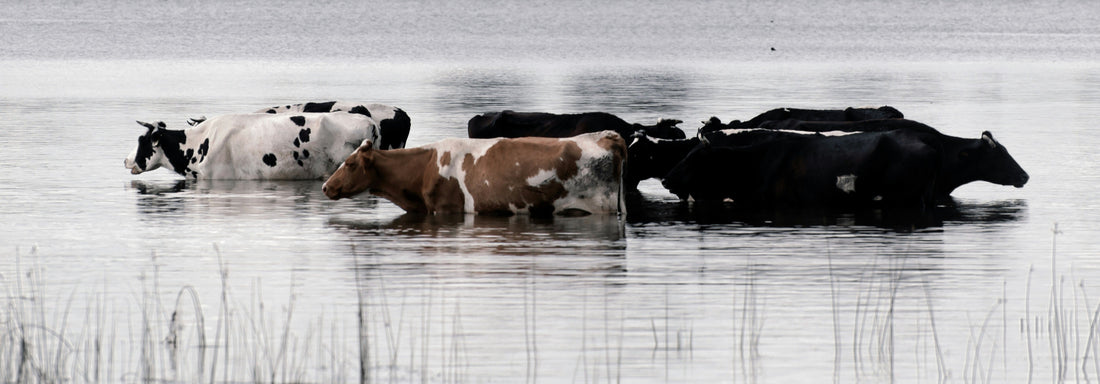Farming Around the World Is Dying.
And It’s No Accident
By Bronwyn Holm
Across continents and communities, something deeply alarming is happening—our food-growing heartlands are collapsing. Quietly, systematically, and in plain sight.
From Europe to Australia, the United States to Asia, the same tragic pattern is unfolding. Farmers are being pushed out. Food crops are being destroyed. Fertile land is being repurposed, abandoned, or lost to floods and foreign interests. And the world’s ability to feed itself is being eroded—not by accident, but by design.
Here’s what they’re not telling you...
Spain: Flooded and Forgotten
Spain, one of Europe’s major producers of tomatoes and fresh vegetables, was battered by catastrophic floods. In recent years, entire agricultural zones were submerged, wiping out hundreds of tomato farms and permanently damaging vital food-growing regions. Once-thriving food bowls have become ghost lands, abandoned to climate chaos or quietly transitioned to industrial development.
Italy: The Death of the Mediterranean Food Bowl
Italy’s fertile Emilia-Romagna region—famous for tomatoes, grapes, grains, and olives—suffered historic flooding in 2023, displacing families and destroying farms. This was no passing storm—it was the breakdown of a system that once fed the nation and much of Europe. Entire crops were lost. Generations of farming knowledge buried under mud. And yet, media coverage barely scratched the surface.
Australia: Food Bowls Replaced by Chicken Sheds
From Queensland to Northern NSW, and across Victoria, fertile food-growing regions have been lost—first to floods, then to bureaucracy, and finally to industry. Orchards and market gardens have been cleared, and in their place? Poultry sheds, corporate developments, and increasingly foreign-owned agribusinesses.
We’ve gone from growing food to importing it, from soil health to supply chain dependency. And the smallholder farmers—the lifeblood of local food—are being driven out.
USA: Louisiana’s Farming Collapse
In the U.S., the state of Louisiana has lost over 2,000 farms in just five years, mirroring a nationwide trend toward fewer, larger, and more corporate-controlled operations (source).
Local food resilience is evaporating, and in parts of the U.S., food deserts are spreading faster than supermarkets can stock shelves. Some researchers have even compared the rural South to parts of Ethiopia in terms of food security and infrastructure breakdown.
South America: Crumbling Under Climate and Corporatism
In Argentina, farmers are holding back on soybean sales due to chaotic foreign exchange policies and collapsing trust in the system (source). In Brazil, coffee farmers are fighting back against crushing drought by turning to expensive irrigation systems just to keep crops alive (source).
Even though Latin America is one of the largest food producers on Earth, more than 40% of the population experiences food insecurity (source). This is the paradox of modern agriculture: growing more, but feeding less.
India: Native Seeds Replaced, Farmers Displaced
India has suffered deeply from the corporatization of seed supply, with native cotton strains wiped out by patented GMO varieties. The result? Soil degradation, pesticide dependency, and farmer suicides. Thankfully, some farmers are fighting back, reviving native strains and working to restore the land’s natural rhythms (source).
Asia: Small Farmers Trapped in Big Systems
Across Asia, smallholder farmers produce up to 70% of the region’s food—yet they remain among the most vulnerable. Underfunded, under-resourced, and overburdened, they face mounting climate pressures with little support. Many are being priced out, regulated out, or climate-wrecked out of their ancestral lands (source).
So, Why Is This Happening?
Let’s be honest—this isn’t just climate. It’s not just economics. It’s a system-wide shift:
-
Corporate Land Grabs – Small farms are bought out by global giants.
-
Industrial Expansion – Food-growing zones turned into factories or housing estates.
-
Seed Patents & GMO Takeovers – Destroying native biodiversity and farmer independence.
-
Climate Engineering & Mismanagement – Floods and droughts made worse by bad water policy and geoengineering.
-
Crippling Policies – Bureaucracy choking the life out of real farmers.
-
Supply Chain Monopolies – A handful of corporations controlling what’s grown, how it’s priced, and who gets fed.
This is a controlled demolition of food sovereignty.
The Answer: Grow Local, Think Global
This is why I started Earthfood. We don’t need more chemicals or committees. We need living soil, living microbes, and a return to the sacred, intelligent relationship between land and life.
We need to support local growers, reclaim our food rights, and remind the world that soil is not a commodity—it’s life.
Farming doesn’t have to die—but it will, if we stay silent.
This isn’t just about crops. It’s about culture, survival, and the soul of humanity.
Support your local grower. Grow something yourself. Speak up.
Because without food, there is no freedom.
And without farmers, there is no future.
—
Bronwyn Holm
Founder, Earthfood | Soil to Soul | The People’s Soulution


